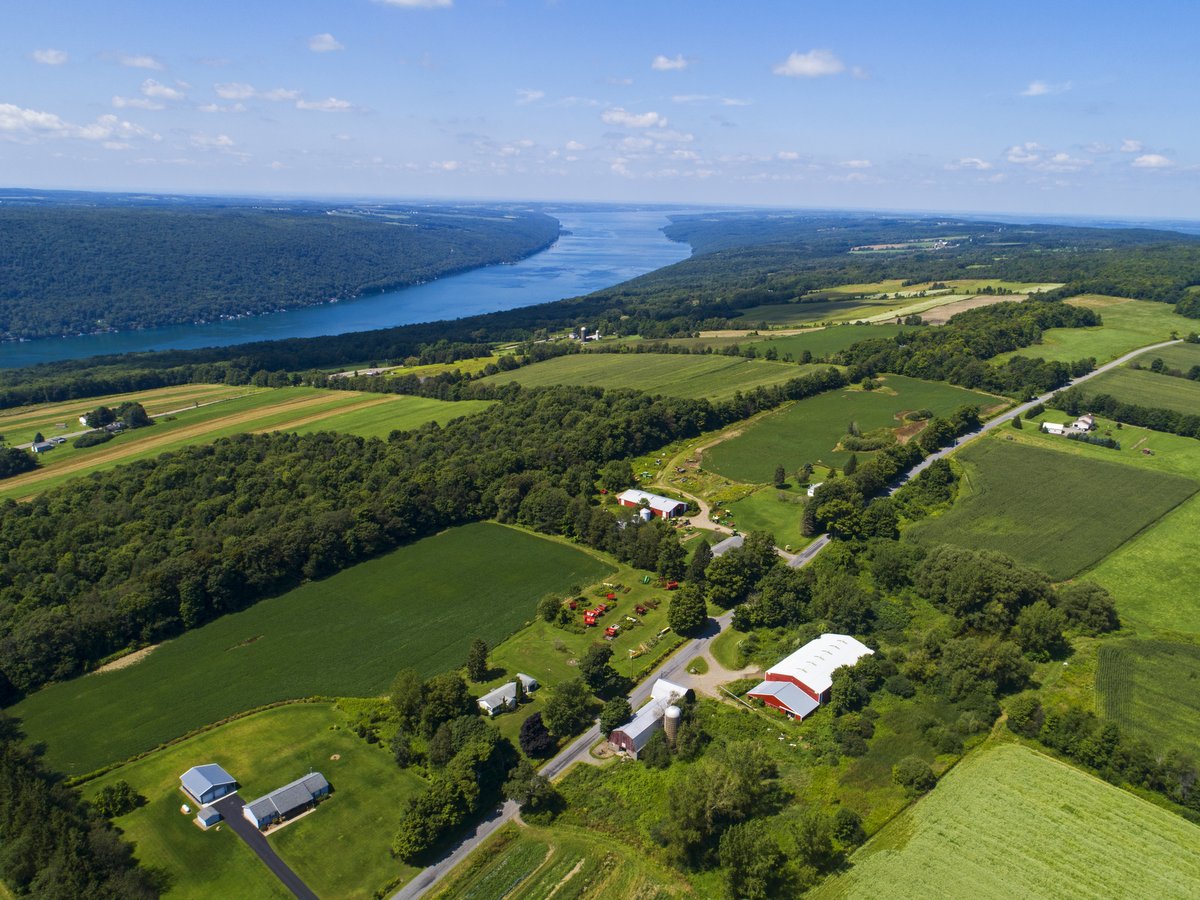The Finger Lakes Land Trust (FLLT) permanently protected 508 acres of farmland at Valley View Farm, located in Cortland and Onondaga counties. Owned and operated by Mike and Joan Franklin, the farm is comprised of multiple parcels in the towns of Scott and Spafford near the south end of Skaneateles Lake.
Mike and Joan are third-generation farmers who grow a variety of crops including corn, soybeans, rye, and potatoes, which are sold to agricultural markets in the region. They have received several awards throughout the years for the management of their farm which has been in the Franklin family since 1930.
Wholly located within the Skaneateles Lake watershed, the farm is mostly defined by crop fields, but also contains portions of Grout Brook as well as meadows, woodlands, and grasslands that provide habitat for a diversity of birds and other wildlife.
The Land Trust completed two conservation easement agreements to permanently protect the farm that is located in an area of increasing residential development. The easements will ensure the property is not subdivided and that it will remain in agriculture in perpetuity. Funds for the project came from the state’s Farmland Protection Implementation Grants Program (FPIG), administered by the New York State Department of Agriculture and Markets.
Valley View Farm is the third farmland protection project completed by the FLLT in this area. The organization recently worked with the Birdsall family to conserve over 900 acres on two farms in Cortland and Onondaga counties. The FLLT also acquired nearby woodlands which link the organization’s High Vista and Hinchcliff Family preserves, creating a 2.25 mile-long corridor of conservation land overlooking the eastern shore of Skaneateles Lake.
Conservation easements are voluntary legal agreements that permanently limit future land use in order to protect the land’s conservation values. Lands subject to conservation easements remain in private ownership, on local tax rolls, and available for traditional uses such as farming and hunting.


